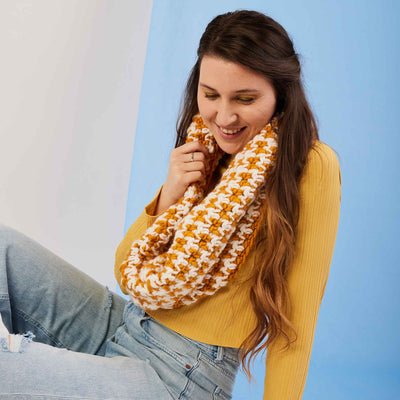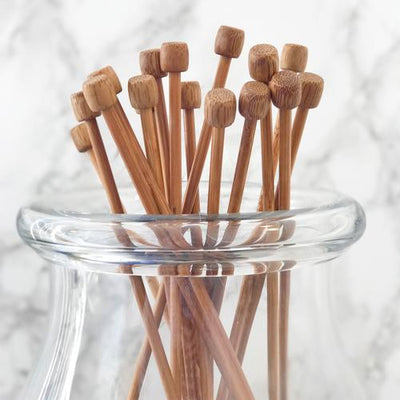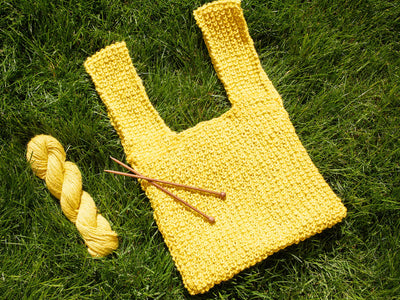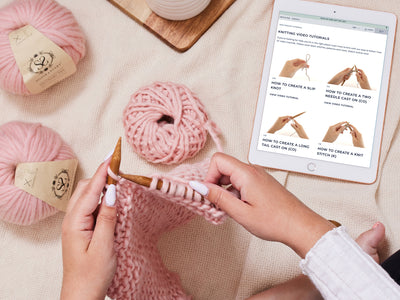
4 Knitting Needle/Crochet Hook Materials & Why We Chose Bamboo
3 min read time
Hello crafters,
Needles and hooks are an integral part of knitting and crochet. Yes, you can knit with a pair of pencils but you’ll achieve more preferable results with the correct tools. Like pencils, knitting needles and crochet hooks can be made of wood, but they’re also available in metal, plastic and bamboo. Often the type you choose comes down to personal preference but in some instances certain materials perform better than others. At Stitch & Story we favour bamboo and all our kits contain bamboo needles or hooks. Any material has its pros and cons but we wanted to share some of the reasons we love bamboo and why we chose it for our knitting needles and crochet hooks.
BEGINNER’S GUIDE - HOW TO CHOOSE THE RIGHT NEEDLE/HOOK FOR YOU
Bamboo
Environmentally friendly
Bamboo knitting needles and crochet hooks are made from the wood of bamboo grass. A quick spreading grass, bamboo is considered an extremely renewable resource due to its growth rate and methods of harvesting. If choosing eco-friendly is important to you, then opting to use bamboo needles or hooks is a better choice for the environment.
Strong but light
Bamboo is a strong and flexible material that is difficult to break so is ideal for knitting needles and crochet hooks. Lighter than traditional wooden needles/hooks, bamboo ones are smooth and sturdy, yet flexible enough to manage most projects.
Warm
Bamboo is a particularly pleasant material to handle. Knitting needles and crochet hooks made from bamboo have a natural, earthy feel and warm slightly to the touch. This warmth feels good in your hands and, alongside the fact bamboo is light, makes it a popular choice of needles/hook for anyone with hand or wrist ailments, such as arthritis or carpal-tunnel syndrome.
Ideal for beginners
Comfortable to use, needles and hooks made from bamboo are good for beginners because they start out with some friction, which means stitches are less likely to slide off. However, bamboo needles/hooks get smoother, and therefore faster, with time, making them the ideal tool to grow with your knitting/crochet skills. The more proficient and faster you become with practise, the faster your needles/hook become(s).
Bamboo needles/hooks can also be easier to use and tend not to split yarn as easily as some other types of knitting needles and crochet hooks.
Quiet
Traditional metal knitting needles produce a ‘clinking’ sound while used that can be just as annoying for the knitter as it can be for those in close proximity. While all needles produce some sound, that produced by bamboo needles coming into contact with each other is much quieter and soothing.
Natural material
Bamboo is a natural material so it is worth remembering that, unlike manufactured metal and plastic, it may have imperfections. The grain and colour of bamboo knitting needles and hooks will vary, even within a pair. The flexible nature of bamboo also means it can develop permanent curvatures; you may even find bamboo needles/hooks bend over time, but this generally does not affect their usability.
Wood
Pros
Knitting needles and hooks made from wood share many properties with those made from bamboo. Wooden needles/hooks are comfortable to use, relatively quiet and have some grip, so are less likely to drop stitches and are good for intricate knitting/crochet. They’re also light but not quite as light as bamboo.
Cons
Depending on what wood the knitting needles and crochet hooks are made from, they can be expensive. The grip that can be welcome as a beginner knitter can also slow progress down and productivity may drop. Unlike the strength and flexibility of bamboo, wooden needles/hooks are relatively weak and are more likely to break or splinter (particularly smaller sizes).

Metal
Pros
Steel and aluminium knitting needles and crochet hooks are hardwearing and cost effective. The way they are manufactured means they are more uniform across brands. They are particularly smooth and fast, often favoured by experienced crafters. The effortlessness of yarn gliding along a needle or hook is a desirable quality to many knitters or crocheters.
Cons
Needles and hooks made from metal are heavier than their bamboo, wood or plastic counterparts. They are the noisiest material and the ‘clinking’ sound produced by metal knitting needles can be deemed as antisocial. Metal needles/hooks tend to be quite cold (metal crochet hooks often have rubber ends because of this), which means they’re less favourable for anyone with hand or wrist ailments.

Plastic
Pros
Plastic knitting needles and crochet hooks are incredibly lightweight and offer a similar yarn grip to bamboo. They also warm up relatively quickly making them more comfortable to touch than metal.
Cons
Plastic needles/hooks are weaker and more bendable, and therefore may snap if too much weight or pressure is applied. Like metal, their manufacturing process means they are more uniform, but plastic needles/hooks can have some imperfections that mean the surface isn’t perfectly smooth and can snag yarn. Plastic also isn’t good for the environment as it will not biodegrade, and plastic knitting needles and crochet hooks cannot be recycled.
Knitting needles and crochet hooks come in all different shapes, sizes and materials and ultimately it is up to you to decide what kind of material you like to use. If you’re new to knitting and/or crochet we recommend you try different types because it’s only through experimentation - not just with needles/hooks, but also with yarns and patterns - you’ll find your preference. At Stitch and Story it’s fair to say we love bamboo, you could even say we’re hooked 😉
Happy crafting!




























